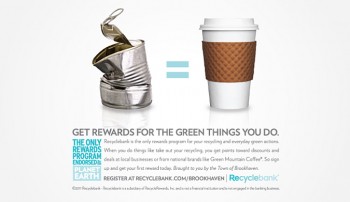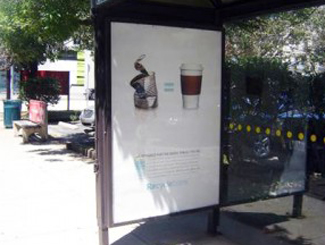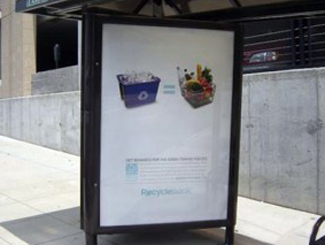By
Team DIGO | 09/28/2011 | in
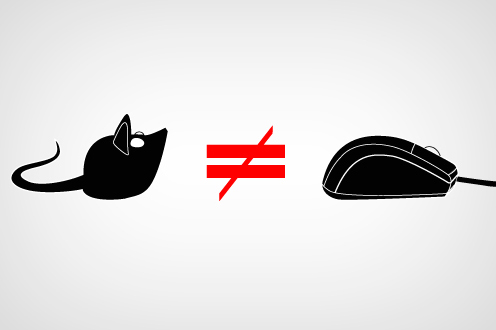
Talking things out can be a time waster. Especially when we imagine that once we agree on the words that all is solved, never suspecting that the pictures in our heads are not the pictures in other people’s heads. One of the most useful things we do with clients is simply to match words and pictures.
This simple process is so rare and such an effective shortcut to better communication that I would seriously recommend it to relationship counselors for serious consideration!
Once we had a husband and wife client team. Both were brilliant, driven, great-looking and nice. He was a celebrity doctor, she was a brilliant retailer. He had a gift for inventing better products and she had an eye for great design. Both were terrific in front of the camera and in the conference room. Both agreed on most things and the one thing they agreed on most strongly was that they wanted their advertising to be “sexy and classy.”
We knew them, and they knew us, so we knew we saw eye to eye. We wanted the work to be sexy and classy too. We were diligent, so the words “sexy and class” were in our brief. We did some work that we felt was a ten on the scale of “sexy and classy” and they bought that work and ran it and it was successful…
But they didn’t really love it. They both felt that it wasn’t really sexy and classy enough.
So, we brought them in for a key words and pictures session. And the results were mind-blowing!
First we brainstorm words that are important to the brand. Everyone gets to write their list of the most important words. Then, each in turn shares their list.
All the words get written on its own piece of paper and put up on the wall. Then we talk about the words, we ask about them, we vote on them. We pull down the redundant ones. We end up with the most important words for the brand. Could be three. Could be five. There’s no hard and fast rule.
Of course, “sexy” and “classy” were two of the key words for this brand coming out of this exercise. So far, so good.
We took a five minute break, during which our brilliant interns spread style, fashion, health and lifestyle magazines all over our tables. When folks returned from the five minute break about ten minutes later, I told them that the were to go through the magazines and cut out pictures that fit the key words that meant to the most to them individually. This is fun stuff, and people are generally very happy to do it. It’s like the most creative things we all did in elementary school.
Then, we go around the room, and people share their work-picture combinations.
And here’s the thing. Both of our married clients had “classy” and “sexy” pictures, but their pictures were very different. An animated discussion between these two formidable partners erupted. The rest of us respectfully left the room so that they could work out their differences on these essential concepts.
When we returned to the room, they were able to speak with one voice – and more importantly to agree on one picture – of “sexy” and “classy.”
I can’t overstate how much easier things got after that. We had built windows into each other’s brains.
By
Team DIGO | 09/07/2011 | in
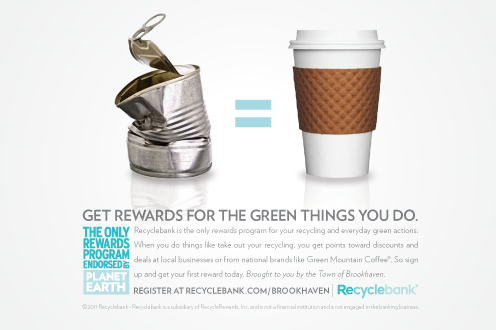
Fresh in-market work from DIGO for brilliant client Recyclebank, the leading rewards program for your recycling and all your green actions. We’re so proud of this work and the impact it can have on families, communities and the environment we all share. We also think it’s a beautiful, elegant solution and we like looking at it! But… before you do, will you do something that will make you feel good? Go to Recyclebank.com and sign up to be rewarded for your green actions. It’s Free. There is absolutely no cost or obligation. No cost to you, ever. And, you get stuff… just for being good to your environment. You recycled. You carpooled. You rode your bike. Just report it on the site and Recyclebank rewards it. It’s “the first rewards program approved by planet earth!”
By
Team DIGO | 09/07/2011 | in
Growth Key: Brand A Category/Incite A Local Response
Initially tapped to launch and test local response marketing campaigns for Recyclebank, DIGO soon recognized that a brand positioning obstacle stood in the way of growth. A series of insights quickly surfaced a huge opportunity. There is a “rewards program” category. Consumers understand this. Recyclebank can own a positioning as the rewards program for green actions. We translated this positioning into the campaign theme “The Only Rewards Program Endorsed By Planet Earth.”
We answer the first question of every communication, “Says who?” This statement packs a lot of messaging into a tight space and frees up the advertising to promote local registration. We tested a multi-channel plan in matched markets, augmented with guerilla tactics and a robust, continuously optimized, geo-targeted digital campaign. Recyclebank is off and running with powerful buzz, positive press, and rising registrations in the target communities.
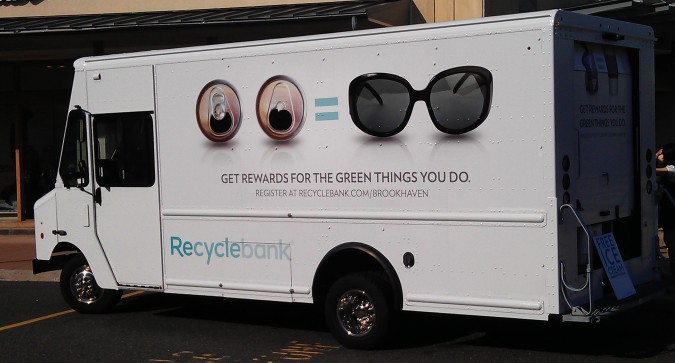
By
Team DIGO | 09/05/2011 | in
You’ll find this works in most situations. Typically, there is an ideal. It may even be attainable. People may not be clear about how long it will take to get there, but they are enamored of it. Most teams, left to their own devices, will ruminate on this project of getting to the ideal for weeks, months, even years.
On the other hand, there is the attainable. The immediate opportunity. The low-hanging fruit. This is not a bitter fruit at all, but typically a quite tasty variety at the peak of ripeness, and within easy reach. Yet people will sit under that tree and plan for next year’s harvest and let those cherries rot on the vine.
Perhaps that’s what Newton was doing when the apple fell on his head.
Take a quick, hard look at your situation. Is it possible that these “short-term wins” will be a distraction that further delays the other much more important achievement? On the other hand, is it also possible that the business can grow fat and strong and successful on meal after meal of low hanging fruit, picked off daily?
This is one situation in which, when faced with a choice between two compelling options, the right answer is often “Both!” But here’s the thing, you must manage to move them both forward simultaneously. For the low hanging fruit, you need one kind of planning. For next year’s harvest, you need another. The first should be driven by a ruthless calculation of time efficiency. You need to create a something that is better than a nothing. And you need to do it in the shortest time and with the least effort possible. You can always improve on it after that. Now go!
When it comes to planning those future harvests, your team must shift to the other side of the brain. How good can this be? When you get into the stage of planning for implementation, you can go back to the other style of planning. But, in the conception phase, make sure the team takes the time to get it right. Just make sure that time is not obstructing progress toward harvesting the low-hanging fruit.
Find ways to bring this concept of Two Track Planning dramatically to the foreground for your teams. Run the schedules side by side on the same page. Do the same with the plans. Celebrate two-track planning. When you see a plan for just one thing, ask about the other track.
This is a simple trick learned from successful entrepreneurs. For the entrepreneur, money never just appears from nowhere to finance the pursuit of your dreams. You must earn it, raise it or pick it yourself. So you get good at paying for tomorrow’s possibilities with today’s opportunities.
Whenever people tell me – and they do quite often – that they have no time to think strategically because they are too busy getting things done, I have some trouble feeling much sympathy. Strategic is the way you approach your job and your opportunities in action every day. Strategic is what you do with that pile of work in front of you.
The pressure of living in the real world means you’re living in the real world. Since you are working on solutions for people in the real world, this ought to be a strategic advantage. Two Track Planning is one great way to be more successful today and more strategic about your future in a time-starved world.
By
Team DIGO | 09/05/2011 | in

A weekly post on some of our favorites from around the Web.
This week’s topic: Steve Jobs
We wouldn’t be us if there were no Steve Jobs. The machines, the experiences, the example… more than anybody, Steve demonstrated what we value, sell and strive to create. The product is 360 degree sensurround inspiration. Every day is an art project and a quest to make our brand and our clients brands a bit more like that. Sun goes up, sun comes down. But the North Star is still there.
-Mark DiMassimo
From the archives: Malcolm Gladwell on the creation of the mouse via The New Yorker. [social_share/]
By
Team DIGO | 09/05/2011 | in
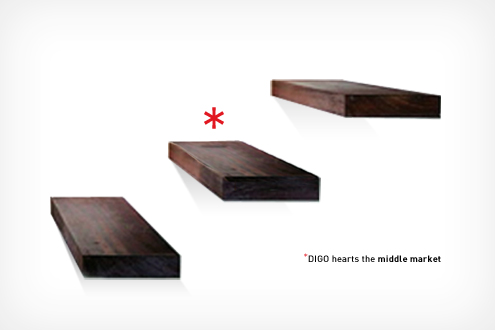
The Middle Market. We love it. Agencies seem to all dream the same dream. Do some great work for smaller clients and then win a bigger client, and perhaps another until you are huge enough to sell out, if you haven’t already. Just another scheme for using current clients as stepping stones to something more important. We see it differently. We want to do great things for middle market growth companies so that we can keep on doing great things for middle market growth companies. We’ve been building the agency that these companies need for fifteen years, and every day we’re better tuned to their realities and opportunities. Why would we ever want to sell that out to be another mediocre agency servicing colossi?
By
Team DIGO | 08/29/2011 | in
Here at DIGO, we have a secret.
Some of us were working on interaction design before there was an Internet.
Some of us cut our teeth designing interactive programs — such as Ford’s first interactive kiosks — before interactive agencies even existed.
A few of us learned a lot of what we know about design for behavior change through A/B testing in print, direct mail and DRTV before we ever started applying and refining this knowledge in the digital world.
And, for the past fifteen years, we’ve spent the better part of our time helping direct model businesses grow and thrive. In fact, to gobble up market share and to dominate.
But we haven’t labeled ourselves a “direct marketing agency.”
Our goal from the beginning was to be a premier creative, branding-building resource, as well an extremely business-like marketing shop. And, let’s face it, to the creative people who were key to this equation, “direct” meant “bad.”
We could better risk failing to attract a few clients who should be here than alienating the creative talent that makes DIGO uniquely effective… but, today things are different. Our track record and work speak for themselves. And the creative people are buying into our premise that “direct” can mean “awesome.”
So, here we go… and not for the last time either:
“Direct.”
There, we said it!
By
Team DIGO | 08/26/2011 | in

A weekly post on some of our favorites from around the Web.
This week’s topic: Steve Jobs
This week’s bonus: From the archives, Malcolm Gladwell on the creation of the mouse, from The New Yorker.






